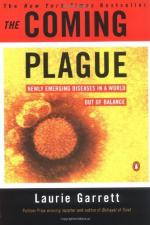
|
| Name: _________________________ | Period: ___________________ |
This quiz consists of 5 multiple choice and 5 short answer questions through Chapter 14: Thirdworldization.
Multiple Choice Questions
1. Joe McCormick met with scientists from what country that wanted samples of the Lassa virus?
(a) Australia.
(b) Brazil.
(c) The Soviet Union.
(d) The United States.
2. The WHO created the Declaration of Alma-Ata which sought to unite the world in a push to create healthy living conditions for everyone by what year?
(a) 2000.
(b) 2050.
(c) 2100.
(d) 1995.
3. The disease that Ron MacKenzie went to Bolivia to investigate in Chapter 1: "Machupo" was dubbed by local doctors as ____________.
(a) Malaria.
(b) Schistosomiasis.
(c) The Black Typhus.
(d) Measles.
4. Following Kent Campbell's recovery, he was sent to investigate the Lassa outbreak in ______________.
(a) Germany.
(b) Spain.
(c) France.
(d) Poland.
5. Chapter 1: "Machupo," Karl Johnson found himself deathly ill with what disease?
(a) Yellow fever.
(b) Schistosomiasis.
(c) Pneumocystis pneumonia.
(d) Bolivian hemorrhagic fever.
Short Answer Questions
1. Kaposi's sarcoma was originally described by Moritz Kaposi in what year?
2. Who was treating Bernhard Mandrella for the Lassa virus when he met Kent Campbell?
3. In a small village in Uganda, young women began becoming ill following sex with a traveling salesman and the disease was dubbed ______________.
4. The Republic of Liberia is located on what continent?
5. What country sought to improve its own infrastructures with little funding, relying instead on education?
|
This section contains 208 words (approx. 1 page at 300 words per page) |

|




